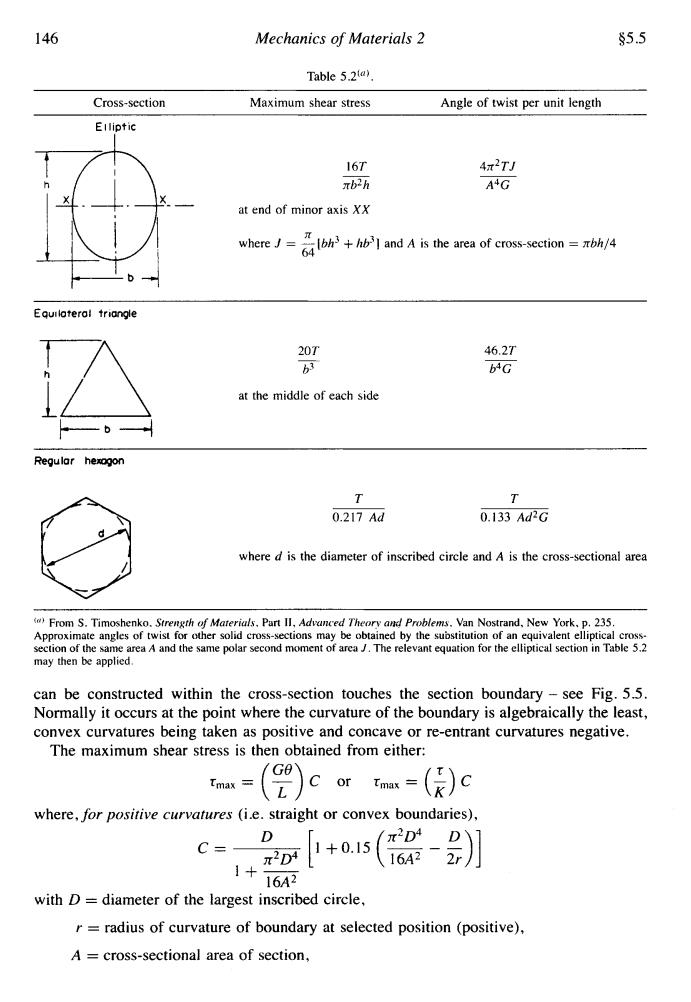正在加载图片...

146 Mechanics of Materials 2 §5.5 Table 5.2ta) Cross-section Maximum shear stress Angle of twist per unit length Elliptic 16T 4x2T/ πb2h A4G at end of minor axis XX wherehand A is the area of cross-section =h/4 Equiloteral triangle 20T 46.2T b3 b4G at the middle of each side Regular hexogon 入 T 0.217Ad 0.133Ad2 where d is the diameter of inscribed circle and A is the cross-sectional area From S.Timoshenko.Strength of Materials.Part ll,Advanced Theory and Problems.Van Nostrand,New York,p.235. Approximate angles of twist for other solid cross-sections may be obtained by the substitution of an equivalent elliptical cross. section of the same area A and the same polar second moment of area /The relevant equation for the elliptical section in Table 5.2 may then be applied. can be constructed within the cross-section touches the section boundary-see Fig.5.5. Normally it occurs at the point where the curvature of the boundary is algebraically the least, convex curvatures being taken as positive and concave or re-entrant curvatures negative. The maximum shear stress is then obtained from either: Tmax r o =()c where,for positive curvatures (i.e.straight or convex boundaries), C= D +o15(-2月 1+ π2D4 16A2 with D=diameter of the largest inscribed circle, r=radius of curvature of boundary at selected position(positive), A cross-sectional area of section,146 Mechanics of Materials 2 $5.5 Table 5.2'") Cross-section Maximum shear stress Angle of twist per unit length EI liptic I 16T 4n2TJ rb2h AJG Equilateral triangle 20 T b' at the middle of each side - 46.2T b4 G ~ Regu lor hem T 0.217 Ad T 0.133 Ad2G where d is the diameter of inscribed circle and A is the cross-sectional area "') From S. Timoshenko. Strength of Materials. Part 11, Adwnced Theory nml Problems. Van Nostrand, New York, p. 235. Approximate angles of twist for other solid cross-sections may be obtained by the substitution of an equivalent elliptical crosssection of the same area A and the same polar second moment of area J. The relevant equation for the elliptical section in Table 5.2 may then be applied. can be constructed within the cross-section touches the section boundary - see Fig. 5.5. Normally it occurs at the point where the curvature of the boundary is algebraically the least, convex curvatures being taken as positive and concave or re-entrant curvatures negative. The maximum shear stress is then obtained from either: where, for positive curvatures (i.e. straight or convex boundaries), with D = diameter of the largest inscribed circle, r = radius of curvature of boundary at selected position (positive), A = cross-sectional area of section